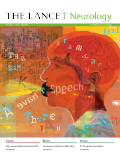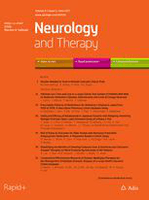
Parkinsons Disease
Scope & Guideline
Advancing knowledge in Parkinson's disease and movement disorders.
Introduction
Aims and Scopes
- Clinical and Therapeutic Insights:
The journal emphasizes studies that explore clinical features, therapeutic interventions, and management strategies for Parkinson's disease, aiming to enhance the quality of life for patients. - Neurobiological Mechanisms:
Research focusing on the neurobiological underpinnings of Parkinson's disease, including genetic, molecular, and neurophysiological studies, is a core area of interest. - Non-Motor Symptoms:
A significant focus is placed on the non-motor symptoms associated with Parkinson's disease, such as cognitive impairment, mood disorders, and gastrointestinal issues, highlighting their impact on patient care. - Innovative Rehabilitation Approaches:
The journal features studies on innovative rehabilitation techniques and therapies, including physical, cognitive, and occupational therapies, aimed at improving functional outcomes for patients. - Technological Advances in Monitoring:
Emerging technologies, such as wearable devices and telemedicine, are explored for their potential to monitor symptoms and improve care delivery in Parkinson's disease patients.
Trending and Emerging
- Mental Health and Quality of Life:
There is an increasing focus on the psychological aspects of Parkinson's disease, including mental health interventions and their impact on the overall quality of life for patients. - Personalized Medicine Approaches:
Emerging studies are emphasizing personalized medicine, where treatment plans are tailored to individual patient profiles based on genetic, phenotypic, and environmental factors. - Technological Integration in Care:
The integration of technology, including telehealth and wearable sensors, is gaining momentum, allowing for continuous monitoring and personalized adjustments in treatment. - Holistic and Multidisciplinary Care Models:
Research exploring holistic care models that integrate various health professionals and therapies to address both motor and non-motor symptoms is on the rise. - Neuroprotective Strategies:
There is a growing interest in neuroprotective strategies, including dietary and lifestyle interventions, aimed at slowing disease progression or mitigating symptoms.
Declining or Waning
- Traditional Pharmacological Treatments:
There is a noticeable decrease in studies focused solely on traditional pharmacological treatments, such as Levodopa, as research increasingly emphasizes comprehensive and multidisciplinary approaches to care. - Single-Factor Analyses:
Research that investigates singular factors in isolation, such as one specific symptom or treatment, is becoming less prevalent, with a shift towards more integrative and multifactorial studies. - Basic Animal Models:
Research relying heavily on basic animal models without translational applications to human conditions is declining, as there is a growing demand for studies that bridge basic science and clinical relevance.
Similar Journals

Neuropsychiatric Disease and Treatment
Pioneering Treatments for Complex Neuropsychiatric DisordersNeuropsychiatric Disease and Treatment, published by DOVE MEDICAL PRESS LTD, is a prominent open access journal dedicated to advancing the field of neuropsychiatry. Since its inception in 2009, this journal has provided a platform for the dissemination of high-quality research on innovative therapies and treatments for neuropsychiatric disorders. With an impressive Q2 ranking in Psychiatry and Mental Health and a Q3 ranking in Biological Psychiatry as of 2023, it holds a reputable position within the scholarly community, reflecting its commitment to impactful research. The journal's open access model ensures widespread accessibility, fostering collaboration and dialogue among researchers, clinicians, and students worldwide. The journal accepts a variety of article types, including original research, reviews, and case studies, encompassing a range of topics from pathophysiology to therapeutic advancements. With its base in New Zealand and a Scopus rank placing it within the 69th percentile of Psychiatry and Mental Health, Neuropsychiatric Disease and Treatment is an essential resource for those dedicated to understanding and treating the complexities of neuropsychiatric conditions.

LANCET NEUROLOGY
Advancing the Frontiers of Neurological ScienceThe Lancet Neurology is a premier academic journal published by Elsevier Science Inc, specializing in the field of neurology. With a robust impact factor that signifies its authoritative presence, it consistently ranks in the Q1 category for clinical neurology according to the 2023 standards, positioning itself as the leading journal in its domain, ranking #1 out of 400 in Scopus' neurology rankings and placing in the 99th percentile. Since its establishment in 2002, it has provided a vital platform for disseminating innovative research and clinical advances related to neurological disorders. The journal’s precise focus includes cutting-edge studies on neurodegenerative diseases, stroke, epilepsy, and neuroimaging, which are essential for advancing clinical practice and improving patient outcomes. While it does not offer open access, readers can find high-impact research published monthly, making it indispensable for practitioners, researchers, and students eager to stay at the forefront of neurological science.

MOVEMENT DISORDERS
Leading the Charge in Neurological InnovationMOVEMENT DISORDERS, published by Wiley, stands as a premier outlet for cutting-edge research in the field of neurology, particularly focusing on the various aspects of movement disorders. With both its ISSN (0885-3185) and E-ISSN (1531-8257) identifiers, this journal is at the forefront of neurological research, holding a remarkable impact factor and recognized in the top quartiles (Q1) of the disciplines of Neurology and Clinical Neurology as of 2023. The journal boasts an impressive Scopus ranking, placing it in the top 8 out of 192 for Neuroscience-Neprology and 19 out of 400 for Medicine-Clinical Neurology, reflecting its high relevance and influence in the field. Released quarterly since its inception in 1986 and continuing through 2024, MOVEMENT DISORDERS publishes a mix of original research articles, reviews, and case reports that catalyze innovation and foster collaboration among researchers, healthcare professionals, and students dedicated to understanding and treating movement disorders. As a non-open access journal, it nevertheless offers valuable insights that are essential for the advancement of knowledge in neurology, making it a critical resource for anyone invested in this challenging and evolving field.

REVUE NEUROLOGIQUE
Connecting Scholars and Practitioners in NeurologyREVUE NEUROLOGIQUE, published by MASSON EDITEUR, is a prestigious academic journal that plays an essential role in the field of neurology. With a rich history spanning from 1946 to the present, this journal focuses on both foundational and clinical aspects of neurology, underscoring its significance within the medical community. Holding an impressive Q2 ranking in both general and clinical neurology categories as of 2023, REVUE NEUROLOGIQUE is recognized for its contribution to advancing neurological science, as evidenced by its Scopus rankings, with a notable position in the 62nd percentile for clinical neurology. The journal fosters an environment for rigorous research and is instrumental for professionals and scholars aiming to stay abreast of the latest developments in neurological disorders and treatments. Although it is not an open-access publication, it offers a wealth of vital research through its issues, appealing to those engaged in both clinical practice and academic research in neurology.

npj Parkinsons Disease
Elevating the discourse on Parkinson's disease research.npj Parkinsons Disease is a leading open-access journal dedicated to advancing research in the field of Parkinson's disease and related neurodegenerative disorders. Published by NATURE PORTFOLIO, this journal has been on the forefront of scientific inquiry since its inception in 2015, providing a high-quality platform for the dissemination of groundbreaking research. The journal's reputation is underscored by its impressive Q1 rankings in Cellular and Molecular Neuroscience and Neurology categories, as well as its commendable positions in Scopus rankings, placing it within the top echelons of neuroscience and clinical neurology research. With its focus on innovative methodologies and translational studies, npj Parkinsons Disease aims to foster collaboration among researchers, clinicians, and healthcare professionals, ultimately contributing to the improved understanding and treatment of Parkinson's disease. Researchers, professionals, and students are encouraged to explore its rich repository of knowledge, accessible freely since its launch, to stay abreast of the latest developments in this critical area of neuroscience.

EUROPEAN NEUROLOGY
Exploring Neurological Innovations Since 1897European Neurology, published by KARGER, is a distinguished journal in the field of neurology, catering to both clinical and neuroscience specialties. Since its inception in 1897 and continuing through 2024, the journal has been a vital platform for disseminating significant research findings and insights in neurology. With an ISSN of 0014-3022 and E-ISSN of 1421-9913, it ranks in the Q3 quartile in both clinical neurology and general neurology categories, reflecting its commitment to scholarly excellence while holding the 175th rank in clinical medicine and the 93rd in neuroscience, according to Scopus metrics. European Neurology facilitates a deeper understanding of neurological disorders and treatments, appealing to a diverse readership that includes researchers, clinicians, and students alike. Despite not currently offering open access, the journal’s rigorous peer-review process ensures that only high-quality research reaches its audience, making it an essential resource for those looking to stay informed in the rapidly evolving field of neurology.

Neurology and Therapy
Exploring Innovations in Neurology and Therapeutic SolutionsNeurology and Therapy, published by SPRINGER LONDON LTD, stands as a pivotal platform for researchers and practitioners in the field of neurology and its therapeutic applications. This Open Access journal, active since 2012, facilitates the dissemination of innovative studies and cutting-edge findings aimed at improving neurological health. With an impressive ranking in the 2023 Scopus Rankings, where it holds a Q2 category in Neurology and a Q1 category in Clinical Neurology, it underscores its prominence in advancing neurological research. The journal's intriguing scope encompasses a wide-ranging exploration of neurological disorders, treatment methodologies, and healthcare strategies, making it a valuable resource for those vested in enhancing patient outcomes. With an appealing average impact factor, readers are encouraged to dive into the latest advancements and engage with the scholarly discussions that are shaping the future of neurology.

Clinical Parkinsonism & Related Disorders
Exploring the complexities of neurological disorders.Clinical Parkinsonism & Related Disorders is a prominent open-access journal published by Elsevier, focused on advancing the understanding and treatment of Parkinson's disease and related neurological conditions. Since its inception in 2019, this journal has aimed to provide a platform for high-quality research, review articles, and clinical studies dedicated to elucidating the complexities of Parkinsonism and its comorbidities. With an E-ISSN of 2590-1125, it has swiftly established its role in the field of clinical neurology, currently ranked in the Q3 quartile for clinical neurology and Q4 for cellular and molecular neuroscience. While its Scopus rankings reflect a competitive landscape, occupying the 241st position in clinical neurology and the 83rd in neuroscience, the journal remains committed to fostering scholarly dialogue and supporting innovative research. Researchers, clinicians, and students will find valuable insights within its pages, contributing to ongoing discourse and the pursuit of effective therapeutic strategies. Access to all articles has been made available since 2019, emphasizing the journal's mission to disseminate knowledge widely and enhance accessibility in the scientific community.

NEUROLOGICAL SCIENCES
Exploring breakthroughs in neurology and psychiatric health.NEUROLOGICAL SCIENCES, published by SPRINGER-VERLAG ITALIA SRL, is a premier journal that has been a cornerstone in the field of neurology and related disciplines since its inception in 1996. With an impressive Q1 ranking in Dermatology and Q2 rankings in Neuroloy (clinical) as well as Psychiatry and Mental Health, this journal consistently delivers high-quality peer-reviewed research that informs and shapes clinical practice. The journal boasts a significant presence on Scopus, positioned in the 89th percentile for Dermatology, 73rd for Psychiatry and Mental Health, and 72nd for Neurology (clinical), reflecting its influential contributions to medical knowledge. Open Access options are available, ensuring that this valuable research is accessible to a wider audience committed to advancing their understanding of neurological sciences. As it converges into future years (2024 and beyond), NEUROLOGICAL SCIENCES aims to continue foster collaboration and innovation amongst researchers, professionals, and students within the neurology and mental health domains, making it an indispensable resource for those dedicated to improving patient outcomes and advancing scholarly dialogue.

Journal of Parkinsons Disease
Connecting minds to conquer Parkinson's Disease.The Journal of Parkinson's Disease, published by IOS PRESS, is a premier open-access journal dedicated to advancing the understanding of Parkinson's Disease and related disorders. Established in 2011, the journal has swiftly gained recognition, achieving impressive rankings within its field: it ranks Q1 in Neurology (clinical) and Q2 in Cellular and Molecular Neuroscience as of 2023. With an impact factor indicative of its rigorous peer-review process and scholarly contribution, the journal stands at the forefront of medical research, particularly positioned within the top 15% of clinical neurology journals worldwide. The journal's open access since 2023 ensures that vital research is readily available to the global scientific community, facilitating knowledge exchange and collaboration. Covering a broad spectrum of topics from basic molecular mechanisms to clinical treatments, the Journal of Parkinson's Disease serves as an essential resource for researchers, clinicians, and students dedicated to tackling one of the most challenging neurodegenerative conditions.